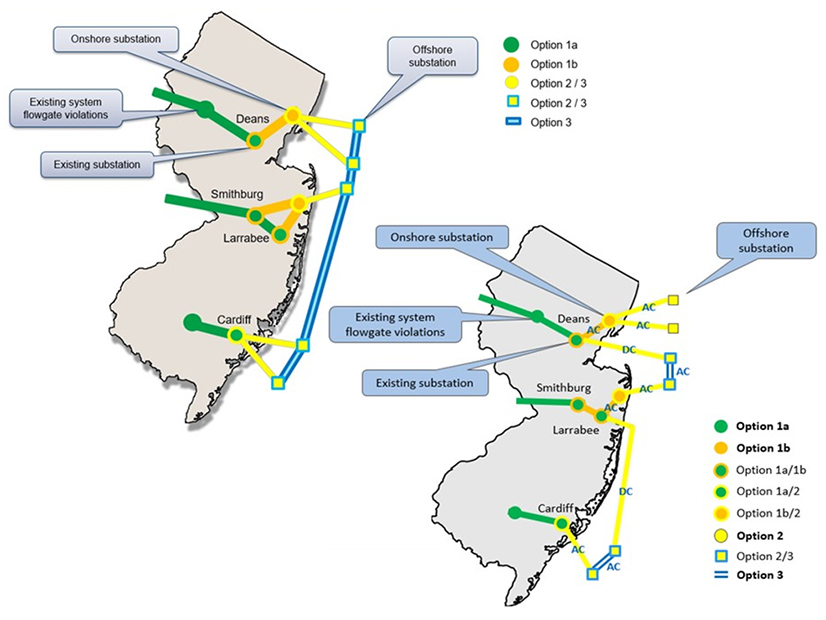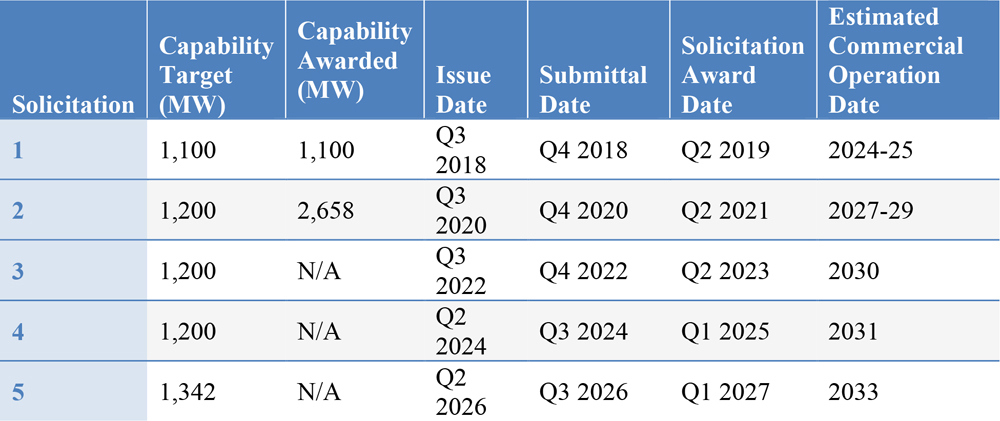
PJM and the New Jersey Board of Public Utilities asked FERC Thursday to approve their plan for using the “state agreement approach” (SAA) to build transmission to deliver the state’s planned 7,500 MW of offshore wind (ER22-902).
Under the proposal, New Jersey would commit to paying 100% of the cost of the transmission but could seek to allocate some costs to other generation projects that use the additional capacity. PJM and the BPU said the SAA agreement, which they asked FERC to approve by April 15, is “an innovative and significant step forward” in meeting New Jersey’s goal of developing offshore wind.
PJM proposed the state agreement approach to comply with Order 1000’s requirement for procedures to address transmission needs driven by public policy requirements in the regional transmission planning process.
As approved by FERC, “the SAA mechanism is not a rigidly defined process in the PJM Operating Agreement,” PJM noted. “Rather, the SAA process is intended to provide the flexibility needed to accommodate the breadth of policies that a state might wish to pursue and to allow that state to select the transmission solution(s) that best addresses its public policy goals.”
The filing is a milestone in a process that began when New Jersey asked PJM on Nov. 18, 2020, to open a competitive window to solicit transmission proposals to connect its OSW. The window, opened last April, closed Sept. 17, 2021. (See PJM, NJ Staff Brief Stakeholders on State Agreement Approach.)
BPU President Joseph L. Fiordaliso called the filing “a critical next step on the pathway for efficient offshore wind interconnection between the approved wind farms and the onshore grid.”
“New Jersey is once again leading the way on offshore wind through this agreement approach, which unlocks the potential for drastically minimizing community impacts while saving money for New Jersey’s ratepayers,” he added.
 NJ BPU offshore wind solicitation schedule | PJM
NJ BPU offshore wind solicitation schedule | PJM
After PJM completes its review of the bids, they will be sent to the BPU to determine which, if any, of the proposed projects the state will agree to fund. According to PJM’s filing, “BPU’s competitive bid evaluation process will review price, risk, environmental and other factors.”
“PJM’s proven competitive process will allow the Board of Public Utilities to select an optimized, comprehensive solution that maintains electric reliability while advancing the state’s energy policy goals,” PJM CEO Manu Asthana said in a statement.
The BPU has awarded more than 3,700 MW of offshore wind generation: Ørsted’s Ocean Wind 1,100-MW project and a combined 2,658 MW for EDF/Shell’s Atlantic Shores Offshore Wind and Ørsted’s Ocean Wind II.
Request
Specifically, PJM asked the commission to approve:
- the assignment of transmission capability created by SAA projects to OSW generators selected through New Jersey’s solicitations;
- the requirement that OSW generators will be studied through PJM’s interconnection queue;
- the granting of any incremental rights, if eligible, associated with any incremental transmission capability created by SAA projects;
- New Jersey’s ability to obtain cost sharing from entities other than OSW generators that seek to utilize facilities created as part of an SAA project, including offshore transmission facilities and extensions to the onshore grid; and
- the ability of the BPU to assign some or all of the capability created by SAA projects to public policy resources other than OSW generators.
“Importantly, the SAA agreement does not consent to the selection of any SAA project(s), designated entities, or cost allocation methods by which to allocate the costs of any SAA project(s) to New Jersey customers,” PJM said. “Before the NJ BPU can follow through with any of those next steps, it needs to know whether the commission will accept the terms and conditions contained in the SAA agreement. Commission acceptance of the SAA agreement would provide the NJ BPU the regulatory certainty needed to select and sponsor any suitable SAA project.”
Future Filings
If the state selects one or more projects, there would be additional FERC filings specifying the project’s scope, estimated cost, the entity or entities selected to construct it, construction milestones and proposed cost allocation.
PJM said it created the SAA agreement with the BPU “to reflect the complex realities and timelines associated with the development of offshore wind generation and any potential SAA project(s), while at the same time preserving the open access provisions of Order No. 888 and ensuring fair treatment of all other generators in PJM’s interconnection queue.”
“Since New Jersey’s request to inject up to 7,500 MW of offshore wind into New Jersey via an SAA project(s) was known to customers entering the queue after Nov. 18, 2020, such circumstances are appropriately factored into the interconnection study process and may form the basis for assigning the customer new facilities to build or for allocating specific costs to subsequent customers,” PJM said.
“PJM and the NJ BPU urge the commission to recognize the steps they have taken both to preserve fair opportunities for other generators in the queue and open access requirements while, at the same time, ensuring that both the generation and transmission components of the NJ BPU’s SAA proposal can be effectuated on a coordinated and timely basis to meet the state’s public policy goals. PJM urges against efforts to strictly ‘pigeonhole’ each component as being either a part of the interconnection process or the [Regional Transmission Expansion Plan] process without recognizing the important relationship between the two processes under the SAA process, as the failure to do so would render the SAA process meaningless.”
